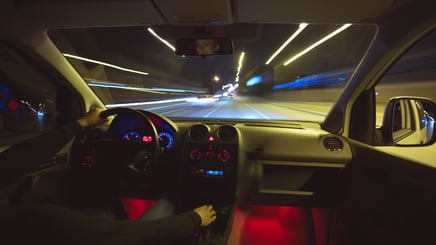2 Types of Torque Sensors in Electronic Power Steering Systems
 In developing the concept of electronic power steering, creators of the system are devising better ways to replace the hydraulic parts of more traditional power steering setups. Hoses, belts, and pumps are replaced by digital sensors and motors in the EPS systems we see today. One of the most critical parts in an EPS application is the torque sensor, which collects steering direct and road resistance input and communicates the torque, or the amount of turning force, back to the EPS control module.
In developing the concept of electronic power steering, creators of the system are devising better ways to replace the hydraulic parts of more traditional power steering setups. Hoses, belts, and pumps are replaced by digital sensors and motors in the EPS systems we see today. One of the most critical parts in an EPS application is the torque sensor, which collects steering direct and road resistance input and communicates the torque, or the amount of turning force, back to the EPS control module.
While EPS is still an emerging technology, it turns out that there's more than one way to transmit what the car is doing back to the control module. Today, there are two distinct types of torque sensors in electronic power steering systems, and it's important for technicians to know the differences between them.
2 Types of Torque Sensors in EPS
The two main types of torque sensors found in electronic power steering systems are contact and non-contact technologies. Both types perform the same function of taking input steering information and transmitting that data as output back into the EPS system, but there are several functional differences between the two categories.
For information on the different types of overall EPS technologies, see our recent blog post.
Non-Contact Torque Sensors
Perhaps the more favored and advanced of the 2 types of torque sensors in EPS, non-contact torque sensors (including Hall-type sensors) measure changes in magnetization to read changes in steering direction and input and measure torque. Inside a non-contact sensor, a magnetic rotor with pole pieces vary the output voltage depending on wheel position. Input splines and output slots (with a torsion bar between them) change position relative to the amount of torsion, and that information is passed on to the control module through magnetic voltage. Though these sophisticated pieces make non-contact sensors more costly, they contain fewer moving parts and resist wear.
Contact Torque Sensors
At the core of a contact torque sensor is a twisting torsion bar that's connected to a rotating bridge that measures the amount of twist, or torque, the torsion bar is experiencing. Contact brushes on the bridge connect to the housing of the sensor and facilitate the transfer of voltage information to the control module. Compared to non-contact sensors, contact torque sensors incorporate a larger number of moving parts that are more exposed to wear, weathering, and elements like fluid, dirt, and contaminants. However, contact sensors have become much more sophisticated over the years, and generally provide a lower cost option to the more expensive non-contact sensors.
Whichever of the types of torque sensors you're dealing with, the sensor is a critical link in digital EPS systems that rely on the communication between their parts to function. As torque sensor technology continues to develop, the entry of more sensors to the market could certainly expand the penetration of EPS in the automotive industry. EPS will only continue to grow within the sphere of your auto shop business in the future, so it's best to start preparing for the transition today.


